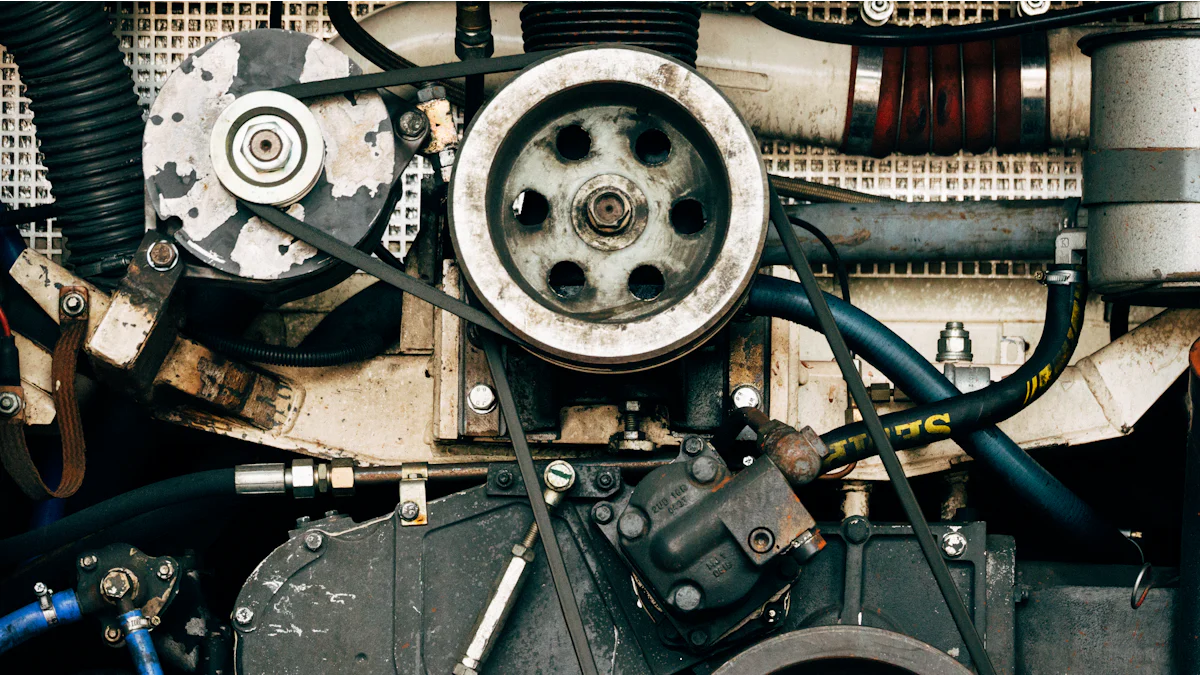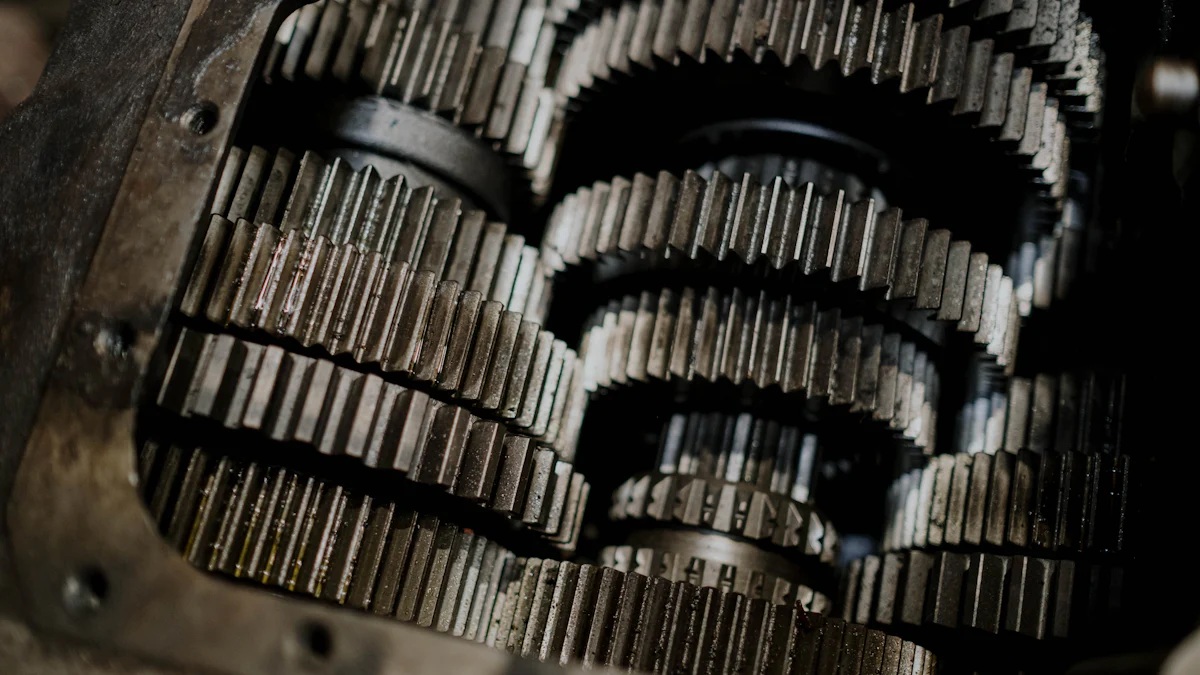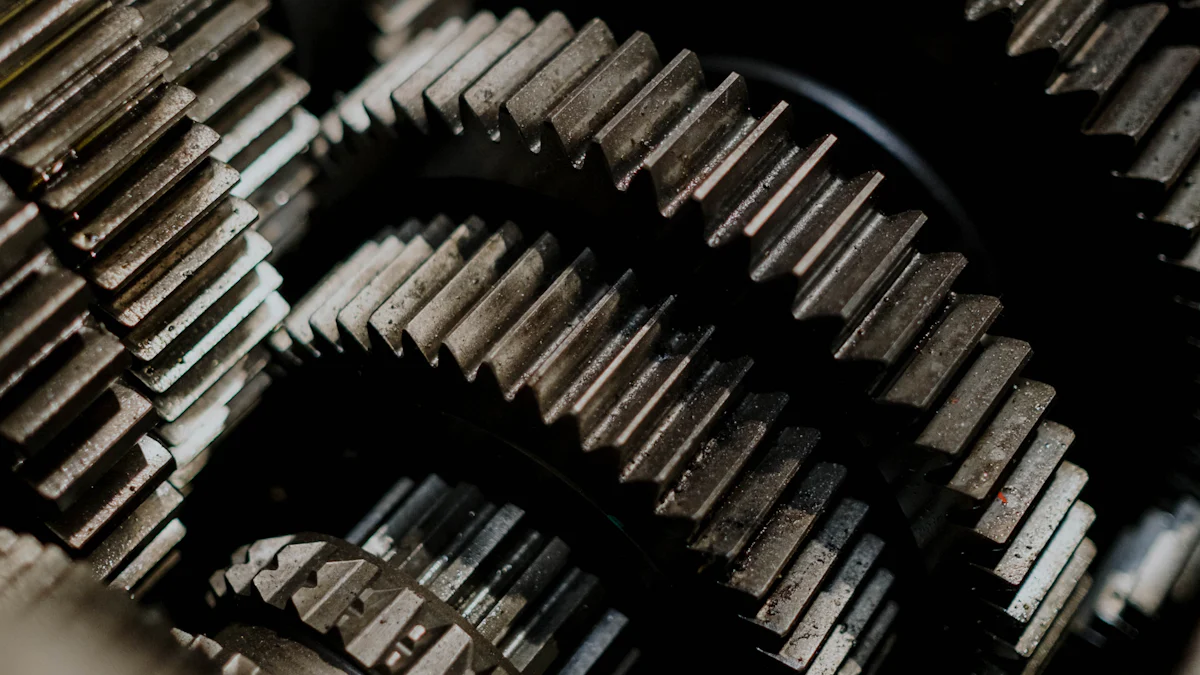
Gear cases play a pivotal role in modern machinery by optimizing performance and ensuring durability. In 2025, innovations like shift-by-wire technology and integration with advanced driver-assistance systems redefine efficiency. These advancements cater to growing demands for precision and sustainability, making the selection of the right gear case essential for achieving operational excellence.
Key Takeaways
- Gear cases keep gears safe and in the right position. This helps machines work better and last longer.
- Choosing the correct gear case, like helical or bevel, is important. It helps machines work efficiently in different tasks.
- New ideas like IoT and better materials in 2025 make gear cases smarter. They help predict problems and save energy.
Overview of Gear Cases
What Are Gear Cases?
A gear case is a protective housing designed to encase and support gears and related components. It ensures the proper alignment of gears while safeguarding them from external factors like dust, moisture, and mechanical damage. Gear cases are typically made from durable materials such as cast iron, aluminum, or composite alloys. These materials provide the necessary strength to withstand high levels of stress and torque during operation.
Tip: Regular maintenance of a gear case can significantly extend its lifespan and improve machinery performance.
The Role of Gear Cases in Machinery
Gear cases play a vital role in transmitting power efficiently within mechanical systems. They house gears that adjust speed, torque, and direction of motion, ensuring optimal performance. For example, in an automotive transmission system, the gear case enables smooth gear shifts and enhances fuel efficiency. In industrial equipment, it helps maintain consistent power delivery, reducing wear and tear on machinery.
Without a gear case, gears would be exposed to environmental elements, leading to faster degradation and potential system failure. By providing a controlled environment, the gear case ensures reliability and longevity.
Key Benefits of Using Gear Cases
Gear cases offer several advantages that make them indispensable in modern machinery:
- Enhanced Durability: They protect gears from contaminants and physical damage.
- Improved Efficiency: Proper alignment within the gear case minimizes energy loss during power transmission.
- Noise Reduction: The enclosed design dampens vibrations and reduces operational noise.
- Versatility: Gear cases are adaptable to various applications, from automotive systems to industrial machinery.
Note: Selecting the right gear case for a specific application ensures maximum efficiency and cost-effectiveness.
Types of Gear Cases

Helical Gear Cases
Helical gear cases house gears with angled teeth that twist around the gear body. This design ensures gradual engagement between the teeth, resulting in smoother and quieter operation compared to spur gears. Helical gear cases excel in handling high loads and are commonly found in high-speed and high-torque applications. Industries such as automotive manufacturing and industrial machinery rely on these gear cases for their durability and efficiency.
Bevel Gear Cases
Bevel gear cases are designed to transmit rotation and torque at a 90-degree angle. These cases are ideal for applications where space is limited. They are versatile and can handle a wide range of loads. However, they require proper sizing and high-quality lubrication to prevent wear and tear. The table below highlights their advantages and limitations:
| Advantages | Limitations |
|---|---|
| Transmits rotation and torque at a 90-degree angle | Potential for noise generation |
| Ideal for space-limited applications | Overhung load on shafts can strain bearings |
| Versatile for a wide range of loads | Requires proper sizing and selection for longevity |
Planetary Gear Cases
Planetary gear cases are compact and efficient, making them suitable for high-torque applications. These cases are widely used in industries such as power generation, automotive, and aerospace. Robotics and industrial machinery also benefit from their durability and performance in demanding environments. Their ability to distribute load evenly across multiple gears enhances reliability and reduces wear.
Worm Gear Cases
Worm gear cases feature a unique design where power transfer occurs through sliding contact rather than rolling. This allows for high reduction ratios and a self-locking mechanism, preventing back-driving. Worm gear cases are compact and ideal for applications requiring significant torque reduction. However, they demand continuous lubrication to minimize wear caused by sliding friction.
Shaft Mounted Gear Cases
Shaft-mounted gear cases are commonly used in industrial settings for power transmission. They are particularly effective in applications such as conveyors, material handling, and screw conveyors. Their design eliminates the need for additional couplings, simplifying installation and maintenance.
High Precision Gear Cases
High precision gear cases are engineered for applications requiring exceptional accuracy and minimal backlash. These cases are often used in robotics, aerospace, and medical equipment. Their ability to maintain precise motion control makes them indispensable in industries where precision is critical.
Application Scenarios

Automotive Industry
Gear cases play a crucial role in improving vehicle performance. They facilitate power transfer from the engine to the wheels, ensuring smooth movement. By adjusting speed and torque, they enhance the driving experience and fuel efficiency. High-performance gear systems manage increased power and torque, making them reliable in demanding conditions.
- Power Transfer: Gearboxes enable efficient power delivery from the engine to the wheels.
- Speed Control: They allow drivers to adjust speed seamlessly.
- Efficiency: Proper gear selection optimizes fuel consumption and overall performance.
Modern vehicles rely on advanced gear cases to meet the demands of electric and hybrid systems, where precision and durability are paramount.
Manufacturing and Industrial Equipment
In manufacturing, gear cases ensure consistent power transmission for heavy machinery. They reduce wear and tear by maintaining proper alignment and minimizing energy loss. Applications include conveyor systems, presses, and mixers. Their durability and efficiency make them indispensable in industrial operations.
Robotics and Automation
Gear cases enhance robotics and automation systems by providing precise motion control. They transmit torque and rotational motion, enabling high accuracy in tasks. Smooth motion reduces vibrations and noise, which is essential in sensitive applications. Gear cases also handle heavy loads, ensuring optimal motor performance in material handling and assembly tasks.
- Gears enable precise motion control for robotic arms.
- They distribute forces evenly, improving load management.
- Reduced vibrations enhance operational efficiency in automated systems.
Renewable Energy Systems
Gear cases support renewable energy systems by optimizing mechanical operations. Their applications include:
| Application | Description |
|---|---|
| Dual-Axis Trackers | Provide precise motion for solar panels to follow the sun. |
| Turbine Positioning | Align turbines for maximum efficiency in hydropower plants. |
| Offshore Wind Turbine Movement | Ensure yaw and pitch control for turbines in harsh conditions. |
| Wave Energy Converters | Control components that capture energy from ocean waves. |
These systems rely on gear cases to improve energy capture and operational reliability.
Material Handling and Food Processing
In material handling, gear cases power conveyor belts, cranes, and forklifts. Their robust design ensures smooth operation under heavy loads. In food processing, they maintain hygiene standards by using corrosion-resistant materials. Applications include mixers, grinders, and packaging systems, where precision and durability are critical.
Innovations in 2025
Advancements in Gear Case Materials
In 2025, material science continues to revolutionize gear case design. Manufacturers now use lightweight alloys, composite materials, and advanced polymers to enhance performance. These materials reduce weight while maintaining strength, making machinery more efficient. For example, carbon fiber composites provide exceptional durability and corrosion resistance, ideal for harsh environments.
Metallic foams also gain popularity due to their ability to absorb vibrations and reduce noise. This innovation improves operational efficiency and extends the lifespan of machinery. Engineers prioritize materials that withstand extreme temperatures and high torque, ensuring reliability in demanding applications.
Note: Choosing the right material for a gear case depends on the specific operational requirements of the machinery.
Smart Gear Cases with IoT Integration
The integration of IoT technology transforms gear cases into smart components. Sensors embedded within the gear case monitor parameters like temperature, vibration, and lubrication levels in real time. This data enables predictive maintenance, reducing downtime and repair costs.
Smart gear cases also communicate with centralized systems, providing insights into performance metrics. For instance, in industrial settings, operators can remotely track gear case health and optimize machinery usage. This innovation enhances productivity and ensures timely interventions before failures occur.
Sustainability and Energy Efficiency Improvements
Sustainability drives innovation in gear case design. Engineers focus on creating energy-efficient systems that minimize power loss during transmission. Advanced lubrication systems reduce friction, improving efficiency and lowering energy consumption.
Recyclable materials and eco-friendly manufacturing processes also gain traction. These practices align with global efforts to reduce carbon footprints. By prioritizing sustainability, industries achieve operational efficiency while contributing to environmental conservation.
Gear cases remain a cornerstone of industrial and technological progress. Each type serves unique purposes, making proper selection vital for efficiency. Innovations in 2025, such as advanced materials and IoT integration, redefine their applications. These advancements ensure gear cases continue to drive machinery performance while meeting modern demands for sustainability and precision.
FAQ
What factors should be considered when selecting a gear case?
Consider load capacity, operating environment, material durability, and application-specific requirements. Proper sizing and lubrication also ensure optimal performance and longevity.
How does IoT integration improve gear case performance?
IoT integration enables real-time monitoring of temperature, vibration, and lubrication. This data supports predictive maintenance, reduces downtime, and enhances overall machinery efficiency.
Are gear cases suitable for renewable energy systems?
Yes, gear cases optimize energy capture in systems like wind turbines and solar trackers. Their durability and precision ensure reliable performance in harsh environmental conditions.
Post time: Feb-06-2025
